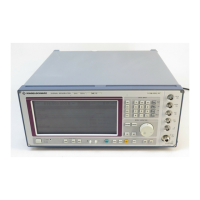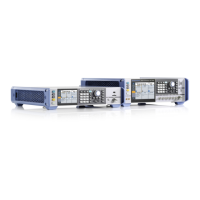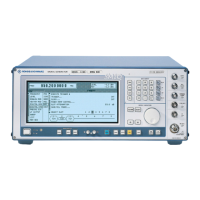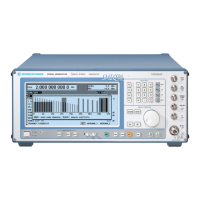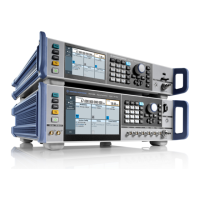Instrument Function
R&S
®
SMU200A
329Operating Manual 1007.9845.32 ─ 15
The file name can be defined by the user.
The "Data Source" selection from the menus is "Data List". When this menu item is
chosen the "Select Data List" button appears; this opens the file-selection window for
data lists. A list can be created and edited in the "Data List Editor", which is accessed
from the menu via the "List Management" or "Data List Management" button.
The maximum length of a data list is determined by the size of the data list memory (see
data sheet). There is no restriction on the number of lists that can be stored.
5.8.2.3 External Synchronous Modulation Data
External Serial Modulation Data via the DATA Connector
For "Custom Digital Modulation", serial modulation data can be supplied bit-by-bit via the
DATA connector. The "Data Source" selection from the menu is "Extern Serial".
In the case of two-path instruments the DATA input is permanently allocated to path A.
In the case of modulation modes with more than 1bit/symbol, the most significant bit
(MSB) must be fed in first (MSB first).
The clock reference (symbol clock) used to read in the data can be either internal or
external.
External serial data is output on the PARDATA pins of the AUX I/O interface as parallel
data LSB-justified.
The maximum data rate for serial data processing can be found in the data sheet.
External Parallel Modulation Data via the AUX I/O Interface
For "Custom Digital Modulation", parallel data can be supplied symbol-by-symbol via the
AUX I/O interface (D0 – D9). The "Data Source" selection from the menu is "Extern Par-
allel".
In the case of two-path instruments the data lines from the AUX I/O interface are allocated
to pathA permanently.
Baseband Signal - Baseband Block

